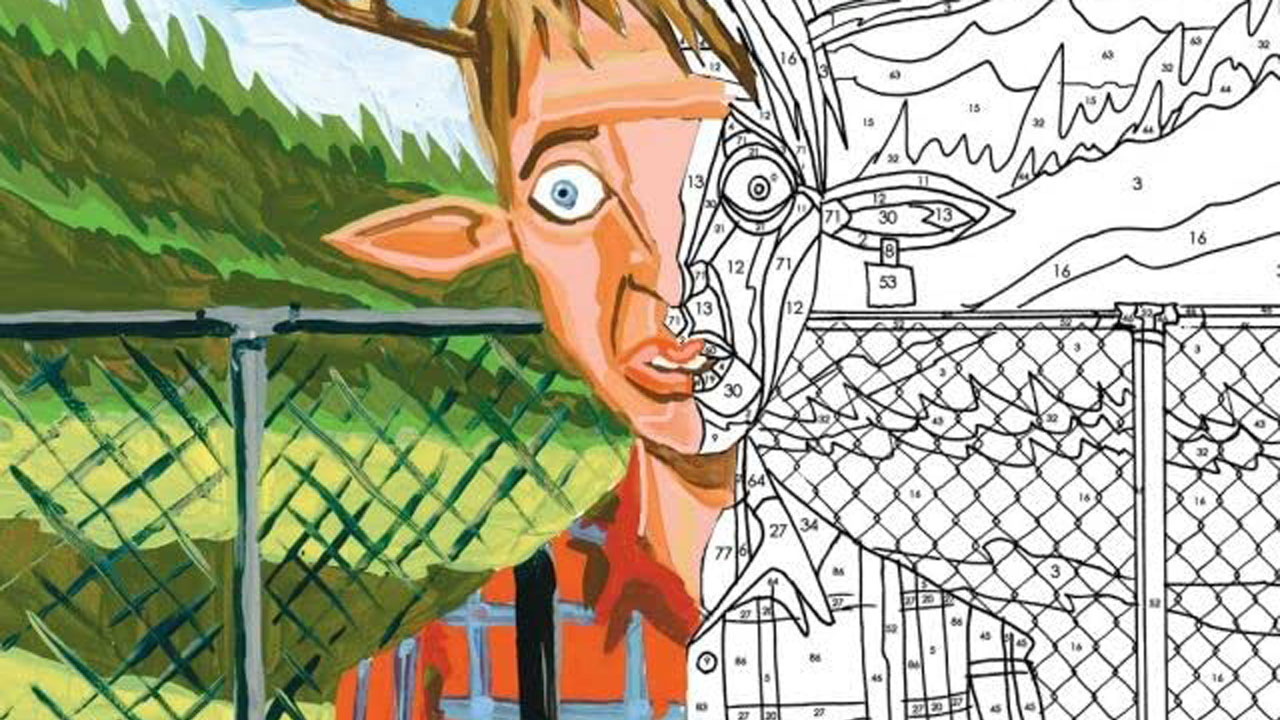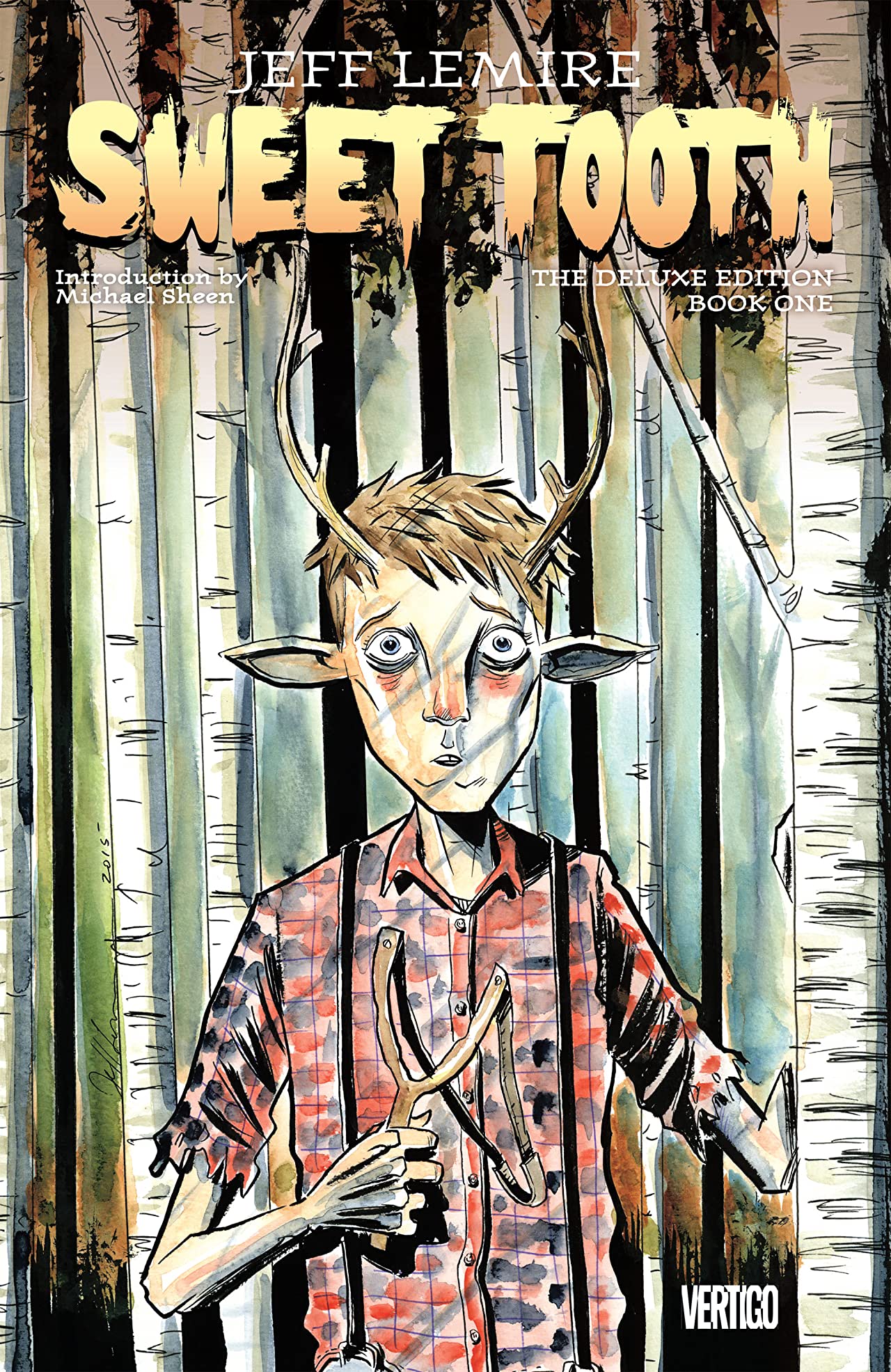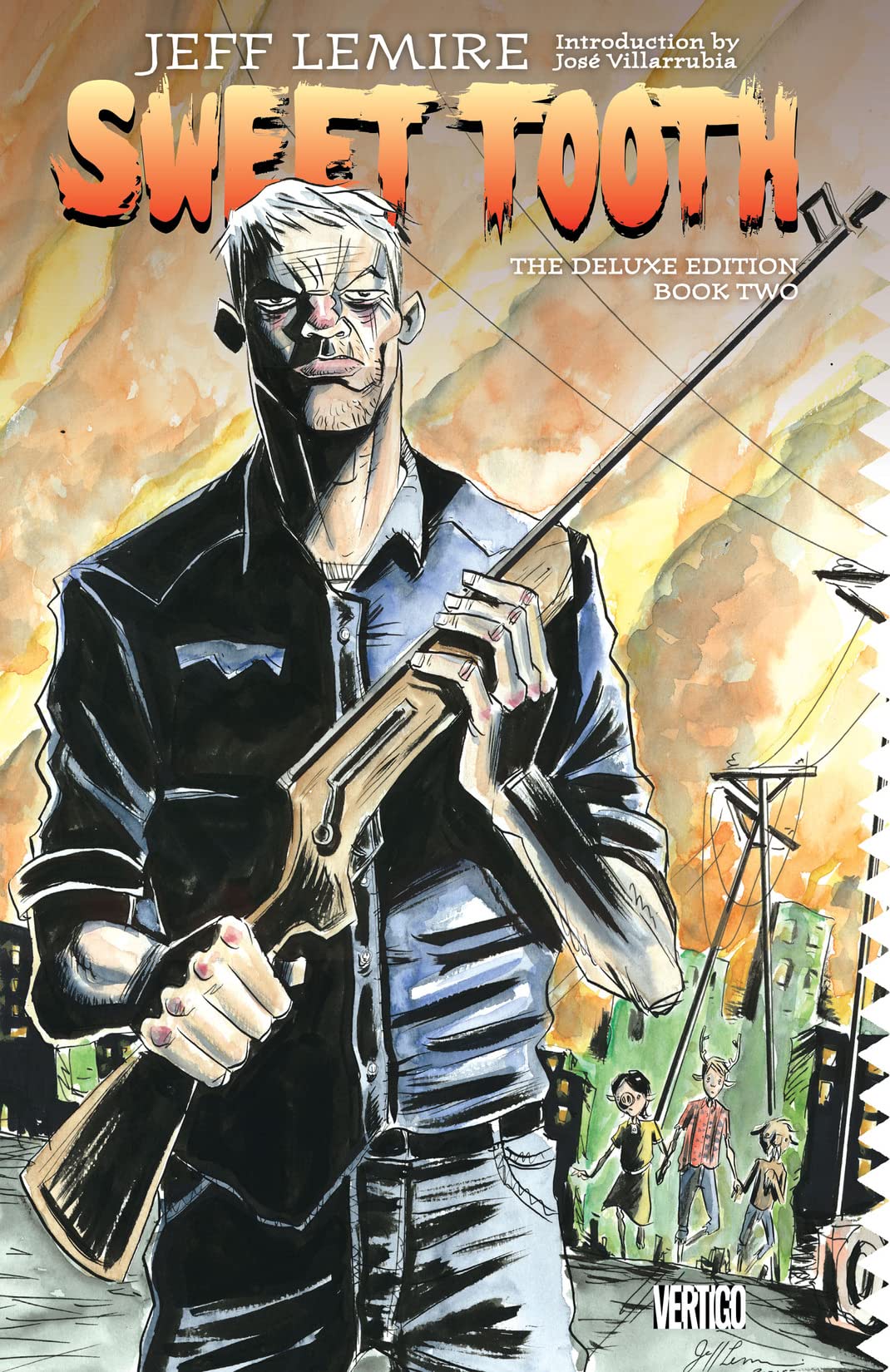Best Shots review: Sweet Tooth a gut-wrenching tragedy of plague and suffering
Jeff Lemire's Sweet Tooth offers brutal honesty, blooming trust, and dazzling flashes of hope for the future

As we collectively head into year two of our global pandemic, I revisited Jeff Lemire's breathtaking series, Sweet Tooth.
In the comic (and in life), the disease takes its toll worldwide, and the everyday human condition is whittled down to the simplest of terms making what is truly necessary to get by clear. Sure, food, water, and shelter are obvious, but it is connecting with others that is the most compelling - the desire for connection propels Sweet Tooth through 40 issues of comic book eminence.
Written by Jeff Lemire
Art by Jeff Lemire, Jose Villarrubia, Matt Kindt, Nate Powell
Letters by Pat Brosseau
Published by DC/Vertigo
'Rama Rating: 10 out of 10
Launched in 2009, Sweet Tooth was nominated for a 'Best New Series' Eisner Award. It did not take home the award in its infancy. Despite that, the series is now a singular classic in its entirety. While the comics genre lends itself well to the outbreak narrative, in general, Sweet Tooth does it spectacularly and stands tall among the ranks of The Walking Dead and Y: The Last Man. Even further, this pandemic parable is a star among other creator-owned series.
Deep in the woods of a Nebraska nature preserve lives Gus, a nine-year-old animal-human hybrid with antlers, floppy ears, and a craving for candy as sweet as his soul. Gus is a good boy. It has been seven years since the Affliction ravaged the human population and killed billions. The darling protagonist has been secluded from the evils of a post-apocalyptic society and raised by a deeply religious man that explained the world to Gus in starkly black and white terms. Then Gus meets Jepperd, a former hockey player channeling an aged Frank Castle, and the world becomes quite grey.
The unlikely pair makes a tenuous agreement that eventually leads to betrayal. The fallout of that betrayal thrusts the story forward and enthralls the reader to their plight. On their journey, Jepperd and Gus band with other survivors, human and hybrid alike, not just to survive, but to find reason in the chaos. Lemire weaves their tragic stories together like a poetic tapestry only to be unraveled, not just by the Affliction but a perfect antagonist.
In this lawless land run by militias and desperation, the children born are hybrids like Gus and immune to the disease. While humans continue to die, hybrids are on the rise. A man named Abbott is determined to find the source of the pandemic even if he must brutally dissect every hybrid he finds to do so. Abbot's mission may be for the greater good, albeit a perversion, and his methods are hopelessly cruel. His viciousness is matched only by Jepperd's grit. Desperately seeking answers and redemption, Jepperd and Gus lead their tribe of necessity to Northern Alaska, where the story finds answers to its most important question and leads to a highly poetic conclusion.
Sweet Tooth is a tale of gods and men, full of twists, turns, and inescapable heartbreak. Lemire's gut-wrenching tragedy of plague and suffering is haunting and unforgettable. But the worry and terror that the reader feels for each character is affectionately tempered by the light of connectedness that runs so deeply between them, then from each character to the reader. What is more, because Sweet Tooth possesses so few wins for its characters, it makes the merciful moments flutter in and beam bright. Sweet Tooth's magic is in its flashes of high contrast, kindness and cruelty, naivete and ghoulish deviance, vulnerability and resilience, love and hate, good and evil.
Get the best comic news, insights, opinions, analysis and more!
The remarkable narrative is complimented by Lemire's hand-drawn, stylized art that emotes divinely. The lines sing when combined with Jose Villarrubia's watercolors. Together, they built a world imbued with grief using grey, brown, blue, and heavy shadows. Nothing about the color or the lines feels digital. It all feels like every panel was carefully crafted by hand, ink, and paper. The wonderfully muted palette is emotionally charged with painful bursts of red, perfectly emphasizing every minute of violence and fear. The color becomes an omen – the father's bible, the militia's trucks, Abbot's glasses - and the reader begins to intuit the danger. The colorwork drives the narrative just as much as the art and writing, and it is all endlessly interesting.
I am not the only one who thinks so because Sweet Tooth is again enjoying the attention it deserves. Last year, it was announced that the series will be adapted into an eight-episode Netflix show with Robert Downey Jr. producing. Additionally, DC's Black Label is three-issues deep into Sweet Tooth: The Return (which is just as excellent as the original, so far).
As with any parable worth its ilk, there is a lesson there. So, what can we glean from Sweet Tooth in our seemingly endless uncertain times? Within the misery that plagued Gus and Jepperd's passage, their connection brought forth brutal honesty, blooming trust, and dazzling flashes of hope for the future. Unequivocally, Sweet Tooth places you firmly on the edge of your seat in anticipation of what comes next. And despite the treacherous past, like Jepperd says, "It's what happens next that really matters."
Sweet Tooth is available now at comic shops, bookstores, and on digital platforms. Check out Newsarama's list of the best digital comics readers for Android and iOS devices.
Vanessa Gabriel does marketing, communications, and design things by day and comic nerd things by night. She's written comic reviews for over a decade but has opined on the portrayal of Wonder Woman for much, much longer.






